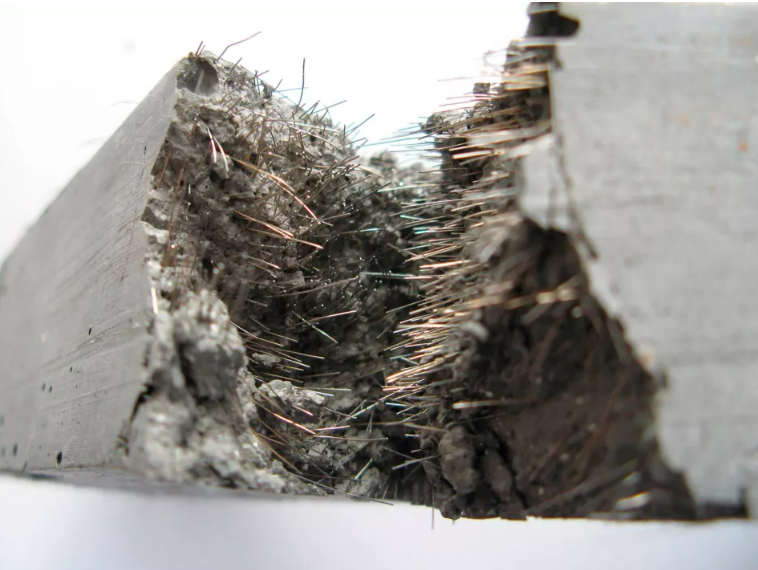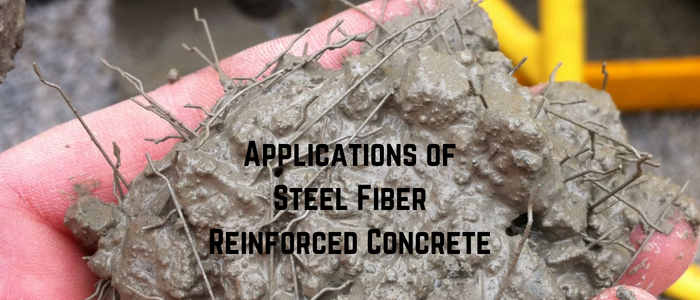Applications of Steel Fiber Reinforced Concrete
Definition of Fiber Reinforced Concrete
According to the American Concrete Institute (ACI), fiber reinforced concrete (FRC) is defined as:
concrete containing dispersed, randomly oriented fibers
Steel Fiber Reinforced Concrete
Steel fiber reinforced concrete is fiber reinforced concrete with the fiber type as “steel”

Applications of Steel Fiber Reinforced Concrete
1- Uncracked Concrete Sections for Water Structures
To begin, we know that normal concrete without reinforcement has good ability to resist compressive forces. However, it has a limited ability to resist tensile forces or flexural stresses.
Thus, if beams are subjected to bending, cracks will normally appear on the tension side.
So, what if we want to prevent cracking of concrete such as in cases of water structures (such as tanks), we follow the procedure to design reinforced concrete sections as “water section“. This is to give uncracked section but the problem with this uncracked section is the big thickness of concrete which means high cost of construction.
Here comes the role of steel fiber reinforced concrete.
Steel fiber reinforced concrete is one way to make uncracked concrete sections at a much lower cost. This is due to the increased toughness of steel fiber reinforced concrete and the capacity of this concrete to absorb energy and resist tensile stresses.
Steel fibre reinforced concrete is used as a supplementary material, as advised by ACI Committee 544, to avoid cracking, to increase resistance to impact or dynamic loads, and to prevent material disintegration.
2- Highway and Airport Pavements
- Pavements made of steel fiber reinforced concrete will have less thickness than pavements made with normal concrete.
- Pavements made with steel fiber reinforced concrete will have higher resistance to abrasion.
- Resistance to impact is higher for steel fiber reinforced concrete.
- Using steel fiber reinforced concrete can provide larger panels of concrete which means higher joint spacing in both directions.
- Steel fiber reinforced concrete can be used in repair applications of existing pavements as thin overlays.
3- Hydraulic Structures
4- Fiber Shotcrete
Adding steel fibres to shotcrete enhances several of the material’s mechanical characteristics, including:
- toughness
- impact resistance
- shear strength
- flexural strength
- ductility factor
Fiber shotcrete has been applied in:
- slope stabilization
- tunnels
- dams
- bridges arches
- dome structures
Summary
- slab-on-grade and overlay construction for airfields, highways, bridges and industrial floors
- repairs to cavitation or erosion-damaged zones in dam stilling basins and spillways
- shotcrete applications in mining, tunnelling and slope stabilization
- production of a variety of precast concrete products such as pipe, utility poles and dolosses for wave protection.
- precast elements
- Tunnel linings
- Manholes
- Sleepers
Read Also:
